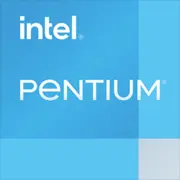Intel Pentium G630

Intel Pentium G630 in 2025: Is It Worth It? A Complete Breakdown of an Obsolete Processor
Introduction
Even in 2025, older generation processors such as the Intel Pentium G630 (Sandy Bridge) continue to attract attention due to their low price. But how relevant are they? Let’s explore who this model is suitable for and what pitfalls await users.
1. Key Specifications: What’s Inside?
Sandy Bridge Architecture
The Pentium G630 was released in 2011 and is based on the Sandy Bridge microarchitecture (32 nm). This is Intel's first generation with an integrated graphics core (Intel HD Graphics) and support for AVX instructions. However, by 2025 this architecture is considered outdated:
- 2 cores, 2 threads — the lack of Hyper-Threading limits multitasking.
- Base frequency of 2.7 GHz — without Turbo Boost.
- L3 cache — 3 MB — modest capacity for modern applications.
Performance in Numbers
Based on Geekbench 6 tests (2025):
- Single-core: 403 points — comparable to modern budget processors (e.g., Intel Celeron G5920 — ~420 points).
- Multithreaded: 651 points — weak performance due to the lack of multithreading.
Key Features for 2025:
- Low power consumption (TDP 65 W).
- Basic virtualization instruction support (VT-x).
2. Compatible Motherboards: What to Look For?
Socket and Chipsets
- Socket LGA 1155 — discontinued. No new motherboards available, only used ones.
- Chipsets: H61, B65, H67, P67, Z68.
Features of Choice in 2025:
- H61 — the most affordable option, but limited to 16 GB DDR3 and lacks overclocking.
- Z68 — supports overclocking (though Pentium G630 is not unlocked).
- Issues: Lack of UEFI with modern interfaces (for example, NVMe requires BIOS modifications).
Example: ASUS P8H61-M LX3 motherboard (used) — $25–$40.
3. Memory: DDR3 vs Modern Standards
The Pentium G630 supports DDR3-1066/1333 MHz with a maximum capacity of 32 GB (theoretically). In practice:
- Most H61 boards are limited to 16 GB.
- DDR3 lags behind DDR4/DDR5 in speed (up to 21 GB/s compared to 50+ GB/s for DDR5).
Tip: Use two 8 GB modules (16 GB) for dual-channel mode — this will speed up the integrated graphics.
4. Power Supply: How Many Watts Do You Need?
With a TDP of 65 W, a system with the Pentium G630 consumes:
- Without a graphics card: ~100–150 W (considering HDD, SSD, fans).
- With a discrete GPU (e.g., GTX 1050): ~200–250 W.
Recommendations:
- A basic 400 W PSU (e.g., EVGA 400 N1 — $35) — for systems without a powerful graphics card.
- For gaming builds — 500 W (Be Quiet! System Power 10 — $55).
5. Pros and Cons: Is It Worth It?
Pros:
- Price: On the second-hand market — $10–$20 (processor + cooler).
- Energy efficiency: Suitable for NAS or media center.
- Sufficient for basic tasks: Office work, browsing, 1080p video.
Cons:
- Outdated platform: No support for USB 3.0, NVMe, Windows 11.
- Poor multithreading: Cannot handle video editing or streaming.
6. Use Cases: Where It Comes in Handy?
- Office PC: Document work, Zoom, browsing (up to 10 tabs).
- Media center: Viewing 1080p through Plex, Kodi (but cannot handle 4K).
- Light gaming: Minecraft, Dota 2 on low settings (with GT 1030 — 30–40 FPS).
Real Experience: A user from Brazil built a PC with G630 + 8 GB DDR3 + SSD for $60 for studying — the system has been running since 2015!
7. Competitors: How Does It Compare?
- AMD Athlon II X2 270 (2011): 2 cores, 3.4 GHz. Pros: Cheaper. Cons: No integrated graphics.
- Intel Celeron G5905 (2020): 2 cores, 3.5 GHz. Pros: Supports DDR4, price $50 (new).
Conclusion: The Pentium G630 lags behind even modern budget CPUs in performance and functionality.
8. Assembly Tips: How to Avoid Mistakes
1. SSD is a must: Kingston A400 240 GB ($25) will speed up the OS boot.
2. Graphics Card: Choose models without additional power requirements (GTX 1650 Low Profile — $150).
3. Cooling: The stock cooler is sufficient, but replace the thermal paste (Arctic MX-4 — $5).
4. OS: Use Windows 10 LTSC or Linux (Ubuntu) for better optimization.
9. Final Conclusion: Who Should Consider the Pentium G630?
This processor should only be considered in cases of:
- Extremely budget builds for office/internet (up to $100).
- Upgrading an old PC without changing the motherboard.
- Projects like retrocomputers or educational setups.
Why Not to Buy in 2025:
- Lack of new components.
- Risk of old parts failing.
- Low performance for modern OS and applications.
Alternatives for 2025
If your budget allows for $100–150, it is better to choose:
- Intel Celeron G6900 (2 cores, 4.0 GHz, DDR4) — $50.
- AMD Ryzen 3 4100 (4 cores, 3.8 GHz, DDR4) — $80.
Both options support modern technologies and guarantee stability.
Conclusion
The Pentium G630 is a relic of the past, but it still has its niche uses. However, in the age of DDR5 and AIO cooling, its time has long passed. Build a system around it only if no other options are available.
Basic
CPU Specifications
Memory Specifications
GPU Specifications
Miscellaneous
Benchmarks
Compared to Other CPU
Share in social media
Or Link To Us
<a href="https://cputronic.com/en/cpu/intel-pentium-g630" target="_blank">Intel Pentium G630</a>